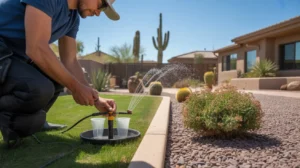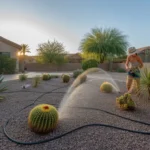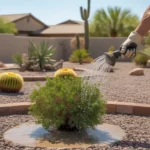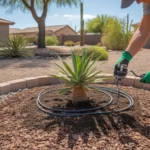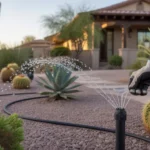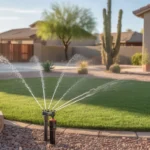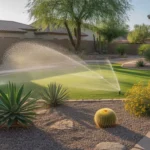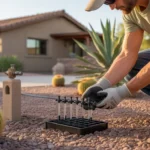Summer in Queen Creek means scorching temperatures and thirsty plants. To keep your yard healthy without wasting water, it’s crucial to dial in your irrigation system. One of the best ways to optimize your watering is by conducting a thorough irrigation audit. This process helps you identify issues, adjust settings, and ensure every part of your landscape receives the right amount of moisture. Let’s dive into the steps for an effective summer irrigation audit in Queen Creek.
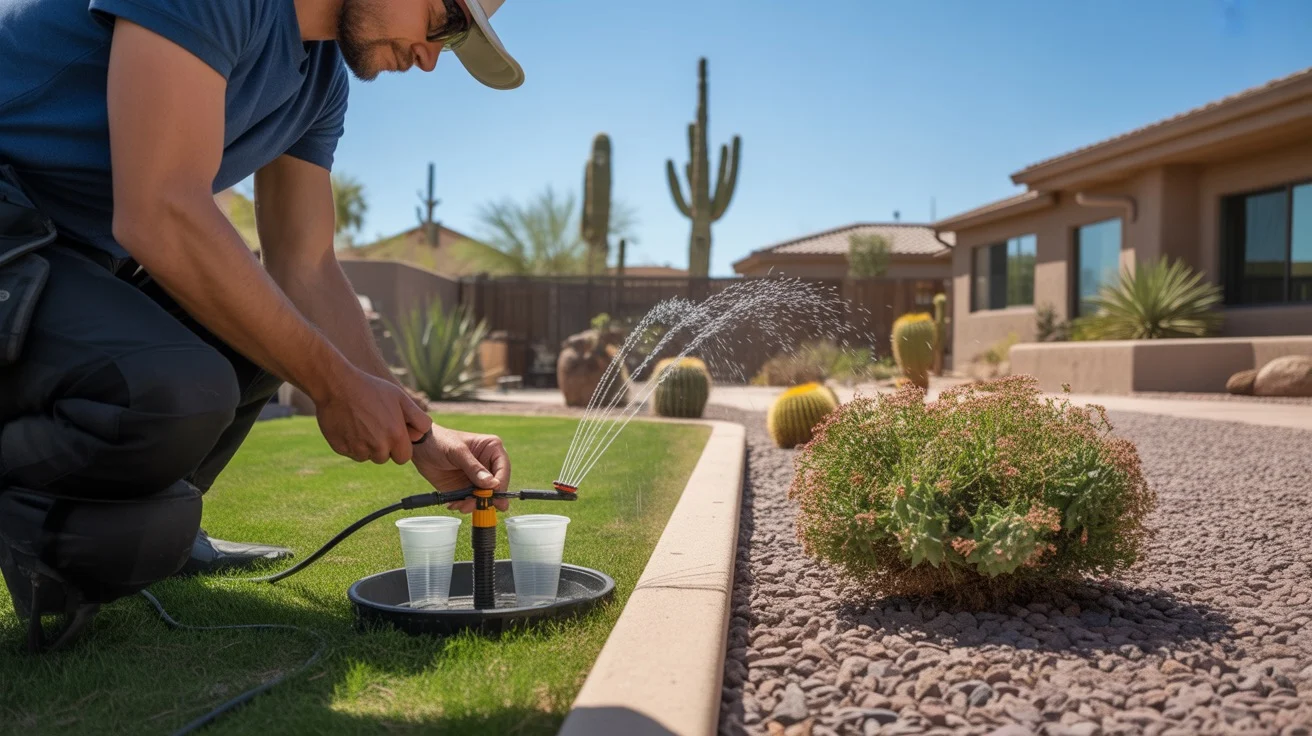
Gather Your Irrigation Audit Tools
Before you begin your Queen Creek irrigation audit, assemble a few key tools:
- Soil moisture probe or meter
- Catch cups or rain gauges
- Pressure gauge
- Stopwatch or timer
- Flags or marking paint
- Notepad and pen
These instruments will help you collect data, spot problems, and fine-tune your system. A soil moisture probe, for example, lets you check water penetration at the root zone. Catch cups measure the output and uniformity of your sprinklers or emitters. And flags are handy for marking spots that need attention or repair.
With your toolkit ready, you can confidently assess your Queen Creek yard’s irrigation performance and make smart adjustments for the hot summer ahead.
Map Out Your Irrigation Zones
Queen Creek yards often have multiple irrigation zones tailored to different plant types and sun exposures. To conduct a thorough audit, start by mapping out these distinct areas. You might have separate zones for grass, desert landscaping, vegetable beds, or shady microclimates.
Create a simple sketch of your property, labeling each zone and noting the type of irrigation (sprinklers, drip lines, bubblers, etc.) This map will be your guide as you move through the audit process, helping you track progress and pinpoint any issues.
As you map, also jot down key details about each zone, such as plant types, soil conditions, and sun exposure. A north-facing patch of Queen Creek lawn may have very different water needs than a sun-baked bed of succulents. Factoring in these specifics will help you evaluate your system’s efficiency and make targeted tweaks.
Inspect Sprinkler Heads and Emitters
Now it’s time to give your irrigation hardware a close look. Turn on each zone one by one, watching for any signs of trouble. Malfunctioning sprinkler heads are a common culprit for wasted water. Look out for:
- Heads that are tilted, sunken, or blocked by obstacles
- Clogged or broken nozzles
- Sprinklers overshooting their target area
- Misting or uneven spray patterns
- Puddles or runoff
Use flags to mark any heads that need to be adjusted, cleaned, or replaced. For drip systems, check for clogged or damaged emitters, kinked lines, or uneven moisture distribution. A slow drip or dry spot can indicate a problem that’s hindering your deep watering efforts.
Fixing these issues promptly will go a long way in boosting your irrigation efficiency. Even small tweaks, like straightening a tilted head or clearing debris from a nozzle, can make a big difference in how effectively you water your Queen Creek yard.
Measure Your System’s Output
To really optimize your summer watering, you need hard data on your system’s performance. This is where those catch cups come in handy. Spread them evenly across each zone, then run your irrigation for a set time (say 15 minutes).
Afterward, measure the depth of water in each cup and calculate the average for the zone. Multiply this by 4 to get your system’s hourly precipitation rate. Check this against the actual needs of your plants and soil type.
In Queen Creek, deep, infrequent watering is generally best to drive moisture down to the root zone. But overwatering can be just as harmful as underwatering. Aim for about 1 inch per week for lawns, and less for desert-adapted plants. Use your audit data to fine-tune your run times and ensure you’re hitting that sweet spot.
Check Your Water Pressure
Proper water pressure is key for efficient irrigation. Too low, and your sprinklers may not cover their intended area. Too high, and you risk misting, runoff, and damage to your system. Most sprinklers operate best between 30-50 psi.
Use your pressure gauge to test the pressure at various points, starting near your valve and ending at the furthest head. If you find low pressure, you may need to troubleshoot for leaks, clogs, or inadequate supply lines. High pressure can be regulated with a pressure reducer valve.
Keep in mind that pressure can fluctuate depending on the time of day and municipal supply. Testing at different times can give you a fuller picture. And if you notice big swings, consider installing a pressure regulator to keep things consistent.
Evaluate Your Irrigation Schedule
With your audit data in hand, take a close look at your irrigation controller settings. Are you running each zone long enough to achieve deep watering? Are you scheduling around Queen Creek’s time-of-day restrictions? Is your frequency appropriate for the season and plant type?
In summer, it’s generally best to water early in the day, between 4-8 am, to minimize evaporation. Aim for longer, less frequent cycles to really soak the root zone. And consider cutting back on watering after summer rains.
If you don’t already have one, consider upgrading to a smart controller that automatically adjusts based on weather conditions and plant needs. These devices can be a game-changer for dialing in your summer watering while staying compliant with Queen Creek regulations.
Make a Plan and Monitor Progress
Wrap up your audit by making a clear action plan. Prioritize any repairs or adjustments you need to make, and set a timeline for completing them. Update your irrigation schedule based on your findings, and set reminders to check in regularly.
Deep summer watering is an ongoing process. Plan to reassess your system periodically, watching for signs of over or underwatering. As plants grow and weather shifts, you may need to tweak your approach to keep things running smoothly.
By staying proactive with irrigation audits, you can keep your Queen Creek yard thriving through the toughest summer days – all while being a responsible water steward. So embrace the process, learn from your landscape, and enjoy the rewards of a deeply-watered, desert-smart yard.

